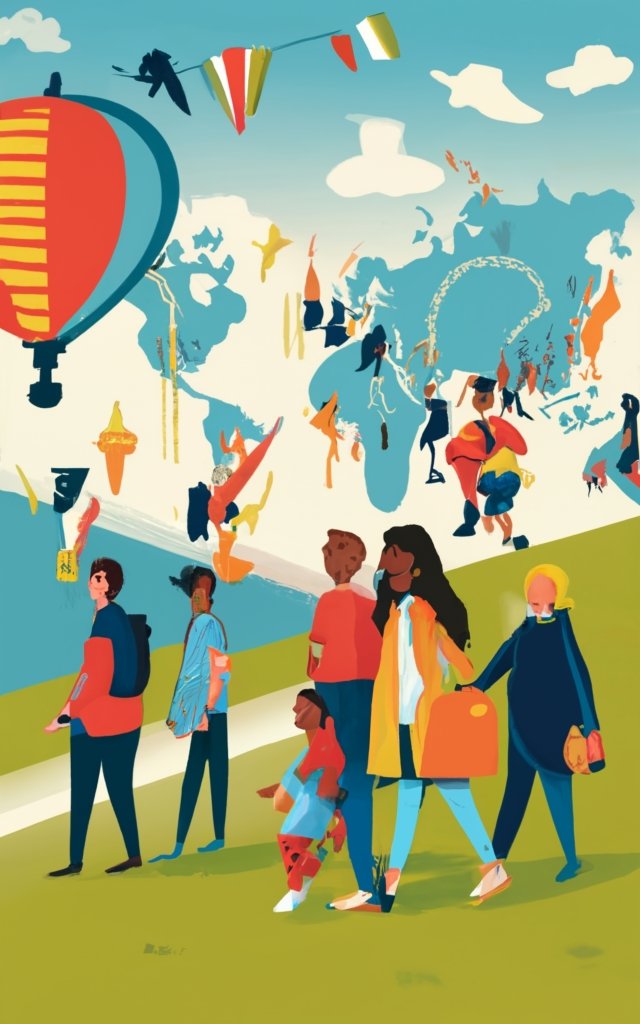Beyond Borders: Why Millions Move and What It Really Means

In a world where “migration crisis” is a buzzword, 2023 data paints a different picture: 305 million people are projected to be international migrants, marking only a 3.5% increase from 2020. So, what’s fueling this global movement, and what does it mean for the future? “Migration is far from a crisis; it’s a complex, multi-layered phenomenon,” says Sarah Williams, a senior policy analyst at the Migration Policy Institute.
Challenging the Crisis Narrative

The term “migration crisis” has been so overused that it’s almost become a cliché. Europe, often depicted as the epicenter of the so-called crisis, has historically been home to the largest number of international migrants. “The narrative needs a complete overhaul,” argues Williams. “Migration isn’t just about numbers; it’s about economic vitality, cultural exchange, and global interconnectedness.”
According to the latest projections, Europe is set to host the largest number of international migrants by 2023, followed by North America and Asia. The increase in migration isn’t a sudden surge but a gradual trend that has been observed for years. “The word ‘crisis’ often implies a sudden, uncontrollable event, but what we’re witnessing is a natural evolution in a globalized world,” Williams adds.
Unveiling the Hidden Drivers
While the search for better economic opportunities continues to be a significant pull factor, other elements are often overshadowed. Climate change, for instance, is expected to displace an estimated 25 million people due to environmental factors by 2023. “Climate migration is the silent exodus that rarely makes headlines,” Williams notes.
Advances in technology are another under-discussed factor. While technology has made it easier for people to migrate, it has also made it easier for governments to surveil and restrict movement. An anonymous expert in the tech industry challenges this view: “While technology can facilitate migration, it’s not the panacea that many think it is. In fact, it can be a tool for governments to enforce stricter immigration policies.”
Furthermore, global economic policies, such as trade agreements and foreign investment, also play a role in shaping migration patterns. “Economic policies can either create opportunities or exacerbate inequalities, thereby influencing migration,” says John Miller, an economist at the World Bank.

Humanizing the Numbers

Statistics can often be dehumanizing, reducing people to mere numbers. But behind these numbers are real people with real stories. Forced displacements are expected to reach 90 million by 2023. “They are families torn apart, individuals seeking better lives, and communities in transition,” says Williams.
For instance, consider Aisha, a climate refugee from Sub-Saharan Africa, or Carlos, a tech-savvy migrant from Latin America. Their stories add layers of complexity and humanity to the data. “Statistics can tell you the ‘what,’ but personal stories tell you the ‘why,'” Williams adds.
Moreover, the human aspect of migration extends beyond those who are moving. It also impacts the communities that migrants leave behind and the ones they join. “Migration is not a one-sided story; it affects both the source and destination countries in various ways,” says Maria Gonzalez, a sociologist who has studied migration patterns for over a decade.
Looking Ahead
As we look toward 2030, with projections suggesting a 33% increase in global migration, it’s crucial to approach this not as a looming crisis but as a complex, multi-dimensional phenomenon. “Whether it’s the aging populations in Japan and Germany relying more on migrant labor or the increasing political polarization affecting immigration policies, the landscape is ever-changing,” concludes Williams.
In a world that often seeks simple answers to complex questions, the narrative around global migration needs a reset. It’s time to move beyond the crisis narrative and delve into the nuanced realities. For in those subtleties lies the essence of the human experience.
“Migration is not just about crossing borders; it’s about crossing cultural, economic, and social boundaries. And in that crossing, new opportunities and challenges arise, shaping our world in ways we often don’t fully understand,” says Williams, offering a final observation that encapsulates the complexity and multi-dimensionality of this global phenomenon.
In the end, migration is not a problem to be solved but a reality to be understood. As we navigate this complex landscape, it’s essential to challenge prevailing narratives, uncover hidden drivers, and most importantly, humanize the numbers. Because behind every statistic is a story waiting to be told.



